12 of 63 Items .... Type: Explainer
Problems, Questions, and Puzzles to spark discussion and argument in the maths classroom.
Navigation:
- by Source
- by Course
.... - Problem Type: 101 Things
3ACT
ASN
ChatGPT
Combinatorics
Comparisons
Constructions
Create a Problem
DebateMath
Definitions
DESMOS Art
Desmos Challenge
DoThis
Epiphany
Equity
Explainer
Find the Error
Find the Pattern
Game
Geometry Snacks
Graphicacy
Graphical Approach
How Many Ways?
How Many?
Illusion
Impossible Problem
MathArt
MathStrategy
MathTip
Meme
Mimizu
Modeling
New
New Understanding
Notation
Notice, Wonder
Number Theory
Number_Search
Number_Talks
Open Middle
Optimization
Pedagogy
Policy
Proof Without Words
Puzzle
Rates
Ratios & Proportions
Raw Pure Math
Regressions
Sensible?
Sidewalk Chalk
Smart Substitution
Starters
Strategy
Terminology
The Hook
The RealWorld
Topology
Understandings
VennWords
Wait. Really?
WCYDWT
What If
What is This?
What Questions
Which Would You Choose?
WODB
Yohaku
. . . View This Fullsize
Say you had data that told you that
The proportion of all US public school students whose families are low-income:
In 1989, less than \(\frac{1}{3} \)
In 2013, more than \(\frac{1}{2} \)
Interpret this in a positive way.
Interpret this in a negative way.
.: [STATS], [Alfie Kohn], [Explainer].
. . . View This Fullsize
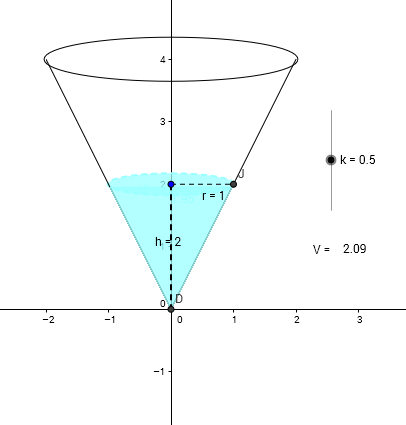
The last of the three related-rate geogebra problems from Kate Nowak. It's the related rate problem from calculus: the conical tank being filled with water.
Adjust the slider and... wait, what is changing and how?
For every click of the slider:
Is the depth increasing at a constant rate?
Is the radius increasing at a constant rate?
Is the volume increasing at a constant rate?
How can you tell?
- Where or how, in the RealWorldtm, could we see the constant increase in volume?
- Where or how, in the RealWorldtm, could we see the constant increase in radius, or depth?
.: [CALC], [Kate Nowak], [Explainer].
. . . View This Fullsize
You've been asked to shade one-third of this triangle.
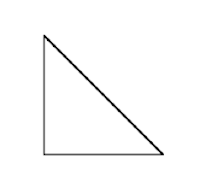
And how do you know?
Here's a response:
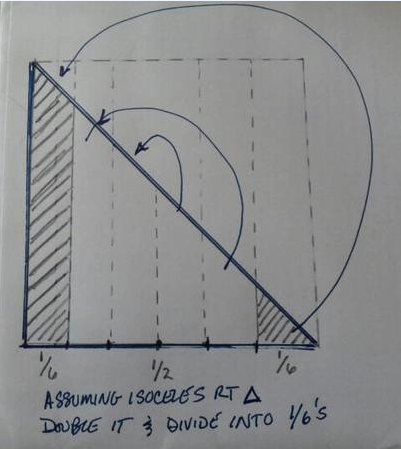
- Is this a valid way to get one-third of the triangle?
- Does this technique require that we stipulate a right triangle?
- Does this technique require that we stipulate an isosceles one?
- Do the lines have to be parallel to each other?
- Do the lines have to be parallel to a side for this to work?†
- Perpendicular to a side for this to work?
- How might we generalize this method (if it can be generalized)?
.: [GEOM], [David Wees], [Explainer].
. . . View This Fullsize
The sum of \(\frac{1}{4}\) and a number is equal to the product of \(\frac{1}{4}\) and the number.
(a) Explain why the number must be negative.
(b) What's the number ?
.: [ALG1], [David Marain], [Explainer].
. . . View This Fullsize
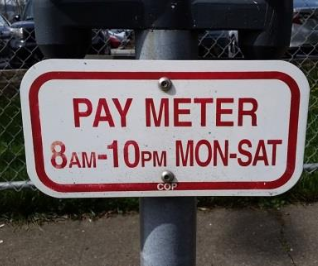
If you are parked during any part of the time indicated, then you need to pay, even if it's only for a few minutes at the beginning or end of your shopping. (If you only are there for the five minutes between 8:00 and 8:05, you only pay a pro-rated fee.)
If you park at any random time and leave your car there for an hour, are you more likely to pay or more likely to not pay?
.: [LOGIC], [Steve Wyborney], [Explainer].
. . . View This Fullsize
What positive and negative shapes (and their dimensions) go into making this yellow figure?
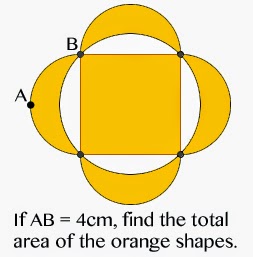
3
On a side note: isn't it cool that I can say the phrase "negative shape" and no one bats an eye?
.: [GEOM], [SolveMyMaths], [Explainer].
. . . View This Fullsize
What shapes (positive or negative) go into making the shaded area?
Include important dimensions.
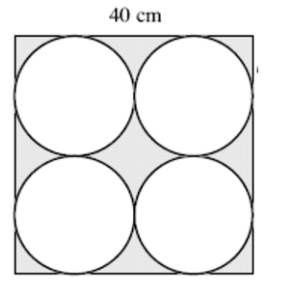
How about here?
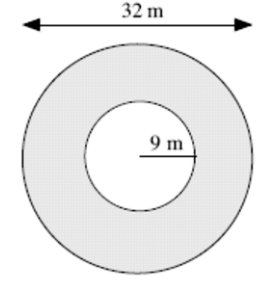
What shapes (positive or negative) go into making this figure?
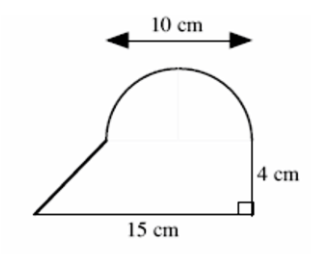
.: [GEOM], [internet], [Explainer].
. . . View This Fullsize
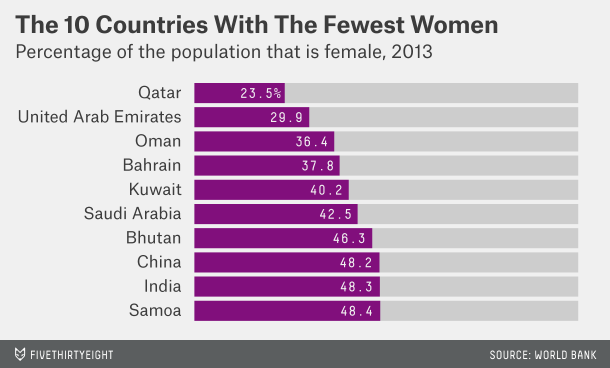
Can you explain how this is possible? Qatar is only 23.5% women?
Before we get into these issue-specific statistics, we can see in basic demographics something thatís different about living in Saudi Arabia as a woman: Only 42.5 percent of the population is female.
There are only five countries in the world (for which we have data) with a smaller percentage of female residents, according to the World Bank:
Qatar (23.5 percent of the population is female)
United Arab Emirates (29.9 percent female)
Oman (36.4 percent female)
Bahrain (37.8 percent female)
Kuwait (40.2 percent female)
Why might this disparity exist?
If you want to see a reasonable explanation, go to this page.
.: [STATS], [T.R.Milne], [Explainer].
. . . View This Fullsize
You only get to make one and you've only got 6 sides. What are the six most important items of math in your opinion? What would you put on your Minimal Math Cube?
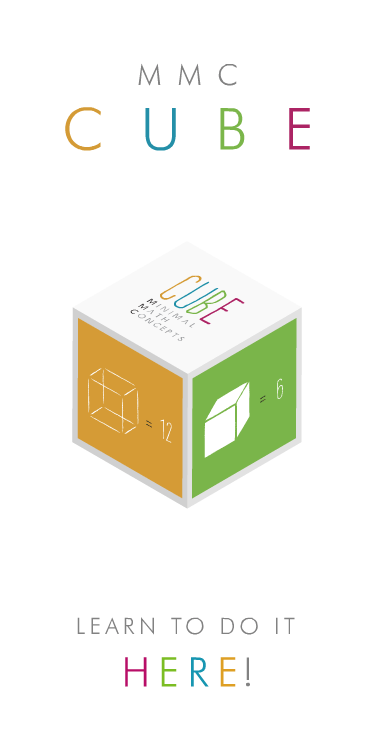
.: [ALL], [internet], [Explainer].
. . . View This Fullsize
Everyone seems to have an opinion and now, students, we're asking for yours.
Scott Macleod says, "We now live within multidirectional conversation spaces in which 12-year-olds can reach audiences at scales that previously were reserved for major media companies, large corporations, and governments. We all now can have a voice. We all now can be publishers. We all now can find each otherís thoughts and ideas and can share, cooperate, collaborate, and take collective action."
So how should addition, and by extension subtraction, be taught? The standard algorithm or by piecewise addition?
Weigh in on the "Letter to Jack".
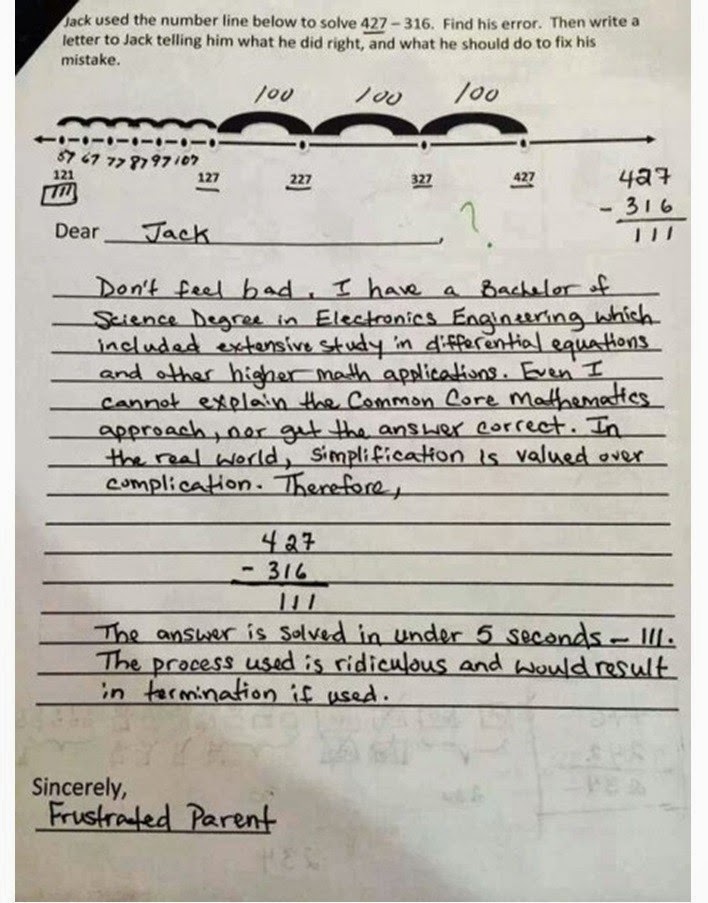
How would you teach these two problems?
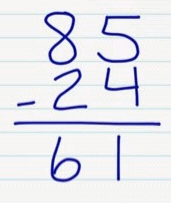 |  |
.: [ALL], [internet], [Explainer].
. . . View This Fullsize
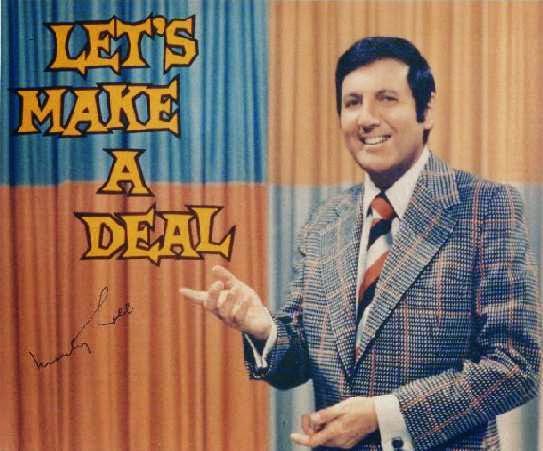
Once upon a time, the world's smartest person (Marilyn vos Savant, IQ: 228) received a question for her newspaper column.
Marilyn's answer was surprising to many people. What do you think?
Suppose you're on a game show, and you're given the choice of three doors. Behind one door is a car, behind the others, goats. You pick a door, say number 1, and the host, who knows what's behind the doors, opens another door, say number 3, which has a goat. He says to you, "Do you want to pick door number 2?"
Is it to your advantage to switch your choice of doors?
Craig. F. Whitaker, Columbia, MD
.: [PROBABILTY], [internet], [Explainer].
